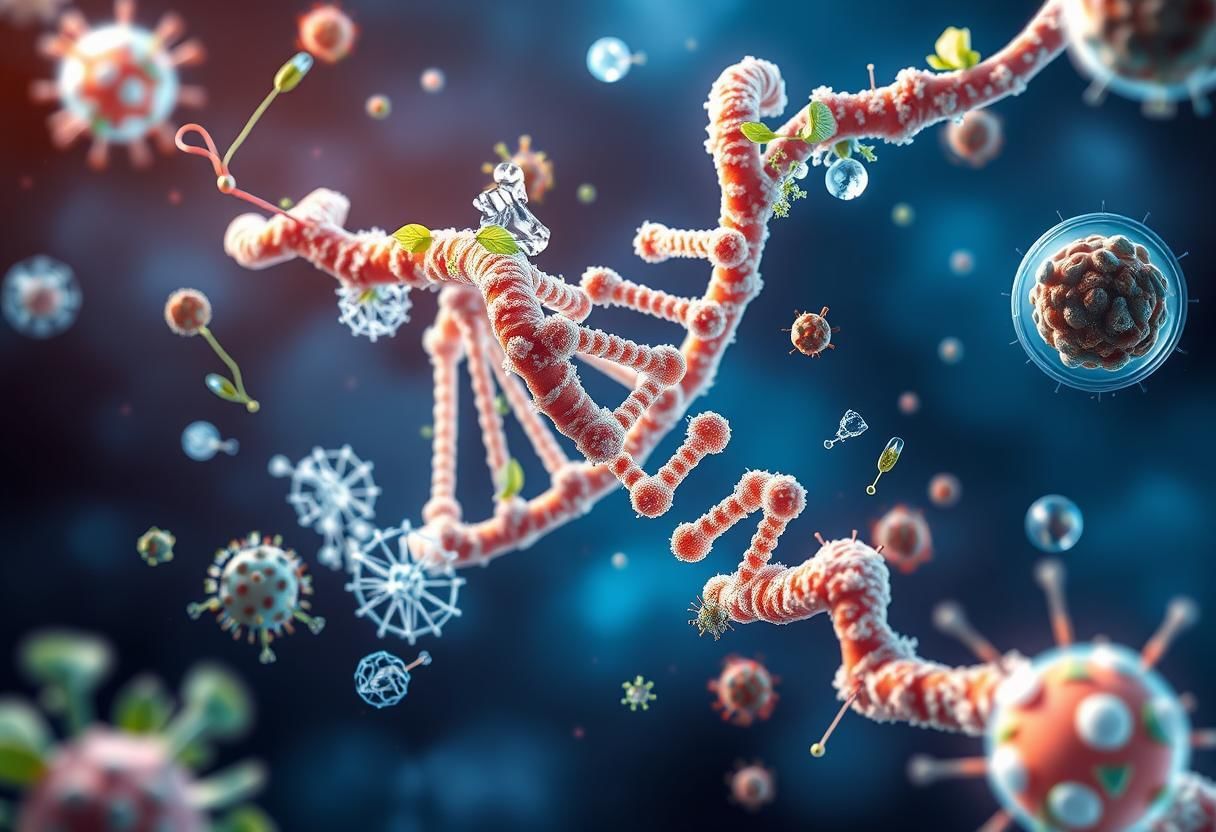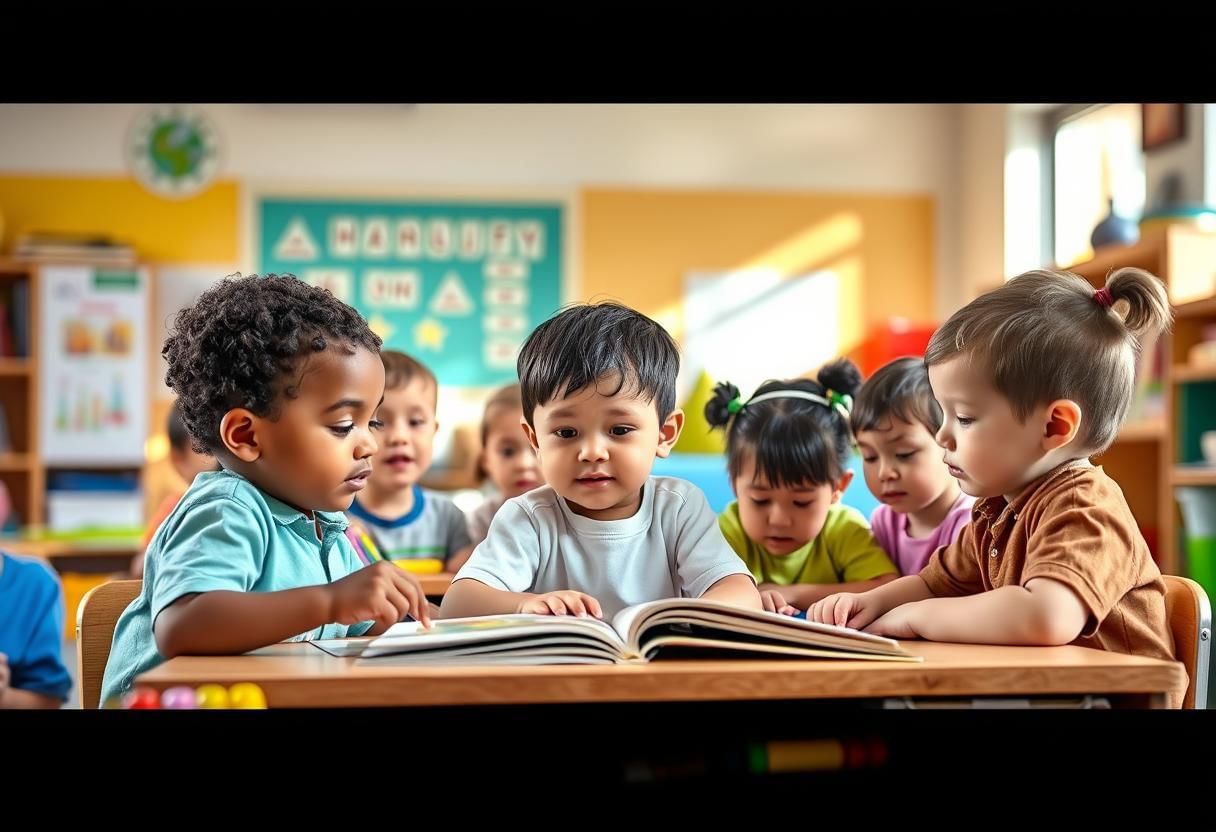Notes: Influence of Heredity & Environment | Child Development and Pedagogy for CTET Preparation - CTET & State TET PDF Download
| Table of contents |

|
| Principle of Heredity |

|
| Laws of Heredity |

|
| Effects of Heredity |

|
| Environment: Meaning & Definition |

|
| Effects of Environment on Child Development |

|
A child's development is greatly influenced by both heredity and environment. Learning and behavioral tendencies are shaped by genetic factors and environmental conditions. Additionally, intelligence and character are significantly affected by the environment. Heredity and environment contribute to the differences in personalities among children. Mental growth is also closely linked to the interplay between heredity and environment.

Heredity: Meaning and Definition
- Human beings share a common genetic structure, yet each person has a unique combination of genetic traits from their parents.
- These traits include eye colour, hair colour, body type, height, and skin colour.
- Therefore, heredity is defined as the transmission of genetic traits from parents to their offspring.
According to Peterson, heredity refers to the inheritance from one's ancestral lineage through parents, which includes:
- Nature
- Character traits
- Appearance
- Intelligence
- Cognitive skills
Principle of Heredity
 Genetic and Environmental Interaction
Genetic and Environmental Interaction
All traits are influenced by both genetic and environmental factors, which work together to shape their outcomes. This means that the expression of genes is dependent on the environment in which they exist.
- The impact of the environment, in turn, depends on the genetic framework it interacts with. Heredity provides the foundation for the development of human personality.
- Heredity refers to the genetic blueprint with which a person is born, evident in characteristics such as height and certain behaviors.
- The environment encompasses everything surrounding a person, including family, friends, schools, neighborhoods, workplaces, and socio-economic conditions present since birth.
- These environmental factors play a significant role in shaping a person's development. While heredity sets a child's potential, the extent to which this potential is realized depends on the environmental opportunities available.
Role of Heredity and Environment in Development
Heredity and environment are two crucial factors that significantly influence children's development. During early childhood, children spend most of their time in preschool and at home, surrounded by family and friends, making these factors vital for their growth.
Heredity refers to the process of passing on traits from one generation to the next through chromosomes. Both physical and mental (emotional) traits play a significant role in shaping the overall personality inherited from parents.
Physical Traits
 Child Development Environment
Child Development Environment
Physical traits encompass characteristics such as height, body structure, the shapes of body parts, and health conditions like heart trouble, diabetes, baldness, and asthma.
Mental Traits
- Mental and emotional traits include aspects like intelligence, memory capacity, interests, and talents in areas such as music, art, literature, and dance.
- These traits also cover behavioral characteristics, for example, being cruel or remaining calm in various situations.
Environment
- Environment encompasses all the physical and social factors that influence a child's development, including their home life, family relationships, neighborhood, friends, school, teachers, and broader societal impacts.
- It is important to note that no individual remains the same from birth to maturity; all these environmental factors play a significant role in shaping a person's health and development.
- Everything that impacts a child, apart from their inherited traits, falls under the category of environment.
- Both heredity and environment are crucial in shaping human nature, although the extent of their influence can vary.
- In certain instances, heredity may have a more pronounced effect during early childhood and within the home setting.
- However, the environment is equally vital in molding human nature, which is why parents need to consider both factors to support their child's development effectively.
- As pre-primary educators, while we cannot alter a child's hereditary traits, we can manage and optimize the environment to promote healthy growth and development.
Laws of Heredity
 Heredity and Traits
Heredity and Traits
Three important laws of heredity are:
- Like Produces Like: According to this law, humans will produce human offspring, just as a cat will produce kittens.
- Only Certain Traits are Transferred: Dominant traits are more likely to be passed on than recessive traits.
- Convergence of Two Lives: Both parents equally contribute to passing on their traits to their offspring.
Effects of Heredity
Heredity plays a crucial role in the development of a child and affects various aspects:
1. On Physical Characteristics
- Physical characteristics refer to a child's appearance or physical features inherited through genes and chromosomes.
- Children typically resemble their parents in traits like height and physique due to biological heredity.
- Genes, sections of DNA containing coded instructions, largely influence child development, resulting in unique variations among individuals.
2. On Intelligence
 Child Physical Traits
Child Physical Traits
- Specific genetic traits determine a child's intelligence and are linked to IQ levels of parents and siblings.
- Intelligent parents tend to have intelligent children, while dull parents may have children with lower intelligence.
- Mental abilities inherited by a child affect emotional development, which in turn influences social, moral, and linguistic skills.
3. On Character
- Character traits are inherited from parents and influence a child's development.
- Parents pass on moral values that influence the moral development of their offspring.
Significance of Heredity for Education
 Childhood Intellectual Development
Childhood Intellectual Development
Heredity plays a crucial role in education for several reasons:
- Basis for Intellectual Capabilities: Heredity establishes the foundation for a child's intellectual abilities and indicates their innate talents. Children inherit a combination of genetic traits that influence various types of intelligence, such as analytical, creative, or practical skills.
- Recognizing and Developing Talents: It is essential for parents and teachers to observe and identify a child's potential strengths and provide the necessary support and development for these talents.
- Development and Learning: Heredity impacts the maturation process, which in turn affects how learning takes place. Genetic factors play a significant role in the development of fundamental skills, such as motor abilities, which are guided by inherited biological instructions.
- Influence on Personality and Temperament: Heredity is also responsible for shaping personality traits and temperament. Children exhibit distinct temperamental qualities from an early age, which influence their activity levels, adaptability, persistence, and learning capabilities.
Environment: Meaning & Definition
 Natural Environmental Elements
Natural Environmental Elements
The environment encompasses all surroundings that affect living beings. It includes air, water, vegetation, mountains, plateaus, rivers, and other elements that collectively shape human life.
- Interacting with the Environment: Human beings interact more extensively with their environment compared to other living beings. The environment plays a crucial role in human development.
- Definition of Environment:
Various definitions of environment by different thinkers are:
- Ann Nastase: "Environment is the factor that affects a human being beyond their life."
- Holland and Douglas: "Environment refers to all external forces, influences, and conditions that affect the life, nature, behavior, growth, development, and maturity of living organisms."
- Gisbert: "Environment is anything immediately surrounding an object and exerting a direct influence on it."
Effects of Environment on Child Development
 Mountainous vs. Plain Environments
Mountainous vs. Plain Environments
1. Physical Dissimilarities
- Physical traits are mainly inherited, but the environment also has a noticeable impact. For example, people in mountainous regions tend to be shorter than those in flat areas, who are generally taller and stronger.
- Observations over generations show that moving to a different location can influence people's physical characteristics.
2. Impact of Environmental Factors on Racial Performance
- Intellectual performance is influenced by both environmental factors and genetic makeup. Races that excel in better intellectual, cultural, and social environments often perform better on standardized tests.
- For instance, if the son of a great leader grows up in a poor environment lacking intellectual and cultural stimulation, he may not achieve the same level of greatness as his father.
3. Effect on Personality
 Urban vs Rural Childhood
Urban vs Rural Childhood
- Environment Influences Personality Development. Personality development is shaped more by the environment than by genetic factors. A supportive and nurturing environment plays a crucial role in fostering positive growth in individuals.
- Success Stories from Low-Income Families. There are numerous examples of individuals from low-income or disadvantaged backgrounds who have achieved success due to environments that enabled them to harness their abilities.
- Study on Twins by Newman, Freeman, and Holzinger. Researchers studied 20 pairs of twins raised in different environments and found notable differences in personality traits between twins brought up in rural and urban settings.
- Urban vs. Rural Personality Traits. Children raised in urban areas were observed to be more sophisticated, carefree, and intelligent compared to their siblings raised in rural environments.
4. Effect on Mental Growth
 Children in Nature
Children in Nature
- Psychologist Gardon observed that the absence of a proper social and cultural atmosphere can hinder mental growth in human beings.
- He studied children living in riverine areas and found that their mental development was hampered due to their poor environment.
5. Environment’s Multiple Effects on Growing Children
- The environment plays a crucial role in shaping the physical, mental, social, and emotional development of individuals.
- For example, a child raised in dense forests, alongside wild animals, developed physical and behavioural traits similar to those of wild animals, leading to difficulties in education and civilisation.
|
70 videos|154 docs|42 tests
|
FAQs on Notes: Influence of Heredity & Environment - Child Development and Pedagogy for CTET Preparation - CTET & State TET
| 1. What is the importance of understanding the influence of heredity and environment in education? |  |
| 2. How do heredity and environment impact a child's learning abilities? |  |
| 3. Can heredity and environment be equally influential in a child's development? |  |
| 4. How can educators address the impact of heredity and environment in the classroom? |  |
| 5. What are some practical ways to support students who may be struggling due to hereditary or environmental factors? |  |
















